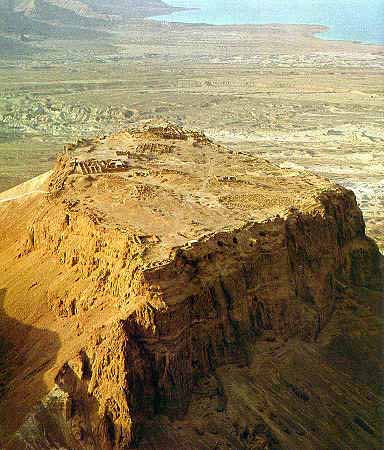|
Other Archaeological Sites / The Neolithic of the Levant (500 Page Book Online) Ancient Masada
After Herod's death in 4 BC a Roman garrison was stationed at Masada and this occupation continued until AD 66 when a large-scale Jewish revolt broke out all over the land. At this time the Jews made a lightning raid on Masada and displaced the Romans. As fighting continued throughout Palestine many more zealous Jews came to Masada and strengthened their garrison. After the fall of Jerusalem under Titus in AD 70 the few surviving Jews who had evaded capture made their way across the Judean wilderness to Masada and joined the patriots in their determination to continue the battle for freedom. In the autumn of AD 72 Flavius Silva -- the Roman general -- took his Tenth Legion, its auxiliary troops and thousands of Jewish prisoners of war and laid siege to Masada; which was then defended by Eleazar, leader of the Zealots. For long months the patriots defended themselves but when the Romans eventually completed an enormous earthen ramp to the top, placed battering rams against the walls and set fire to the fortification the defenders saw they could resist no more ..... On April 15 AD 73 when the Romans at last got into the fortress they found alive only two women and five children -- who had concealed themselves -- and a mass of 960 dead bodies. When the Tenth Legion broke camp and marched back to Jerusalem a small guard remained at the fortress for some years after. Masada returned to ruins during the following nineteen centuries .... |

